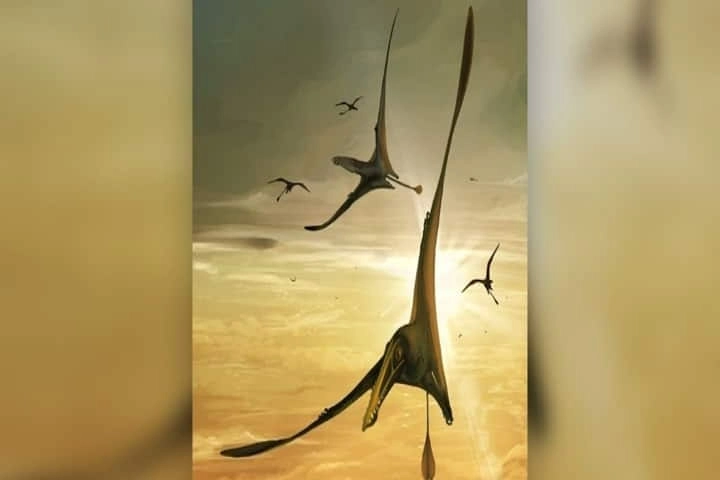The discovery and study of Jurassic period’s largest Pterosaur or flying reptile fossil had plenty of twists and turns. Discovered by a graduate student, Amelia Penny at Brothers’ Point, who was looking for dinosaur bones during low tide on Isle of Skye, Scotland in 2017, its excavation involved use of saw with diamond tips and it was nearly lost when the tide returned, mentions a report in sciencealert.com.
This find of a lifetime was studied thoroughly and its anatomy revealed it to be an unknown species. Christened Dearc sgiathanach, a Scottish Gaelic name, it has double meaning — “winged reptile" and "reptile from Skye” – since the Gaelic name of Skye means "the winged isle".
This species had a wingspan measuring more than eight feet – a big size for a Jurassic period (201.3 million to 145 million years ago) pterosaur.
Sharing details about this species in a statement, Steve Brusatte, a University of Edinburgh professor and personal chair of palaeontology and evolution and senior researcher of the study said: “Dearc is the biggest pterosaur we know from the Jurassic period, and that tells us that pterosaurs got larger much earlier than we thought, long before the Cretaceous period, when they were competing with birds – and that's hugely significant.”
Much before the birds, nearly 50 million years, pterosaurs who were not dinosaurs, were the first vertebrates to fly. The oldest pterosaurs dates back to the Triassic period, that is nearly 230 million years ago and earlier it was thought that they reached big sizes in either late Jurassic or the Cretaceous period which means 145 million to 66 million years ago.
Quetzalcoatlus the largest pterosaur till date with a wingspan of 36-feet or 11 metres was as big as a small passenger plane was found 70 million years ago.
Needing to fly, pterosaurs required delicate and lightweight bones which generally did not allow their remains to fossilise well.
Natalia Jagielska, the study’s lead researcher observed in the statement: "To achieve flight, pterosaurs had hollow bones with thin bone walls, making their remains incredibly fragile and unfit to preserving for millions of years. And yet our skeleton, about 160 million years on since its death, remains in almost pristine condition, articulated [the bones are in anatomical order] and almost complete. Its sharp fish-snatching teeth still retaining a shiny enamel cover as if he were alive mere weeks ago."
Also read: "Flying dragon" Thapunngaka shawi dominated Australian skies 105 million years ago
Jagielska is a doctoral candidate of palaeontology at the University of Edinburgh.
On analysing D. sgiathanach bone growth, the researchers found that it had not completely grown and was as big as present day’s largest flying bird, the wandering albatross. This means that an adult of the species must have had longer wingspan.
The scans generated through computed tomography (CT) disclosed that D. sgiathanach was blessed with large optic lobes thus it had excellent vision.
Scotland region at the time D. sgiathanach was around was humid and its waters were warm and provided the pterosaur squid and fish which it preyed upon with its sharp fangs and well-defined teeth, said Jagielska in a video.
The study was published online in the journal Current Biology.




















